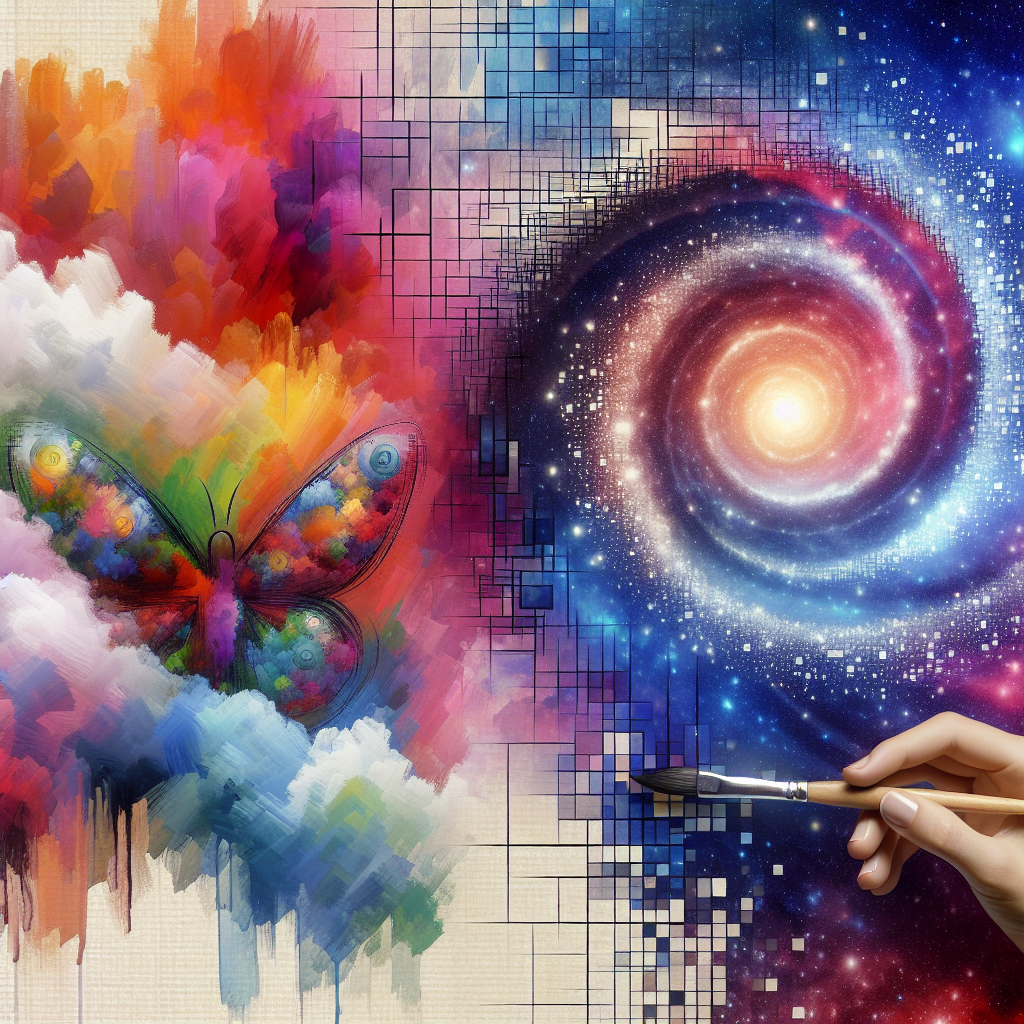Artificial Intelligence (AI) has been rapidly transforming various industries, and the world of creativity is no exception. From music composition to painting, AI has been challenging the traditional notions of creativity and pushing the boundaries of what is possible. This article will explore the impact of AI on creativity, focusing on the intersection of art and technology.
AI and Creativity: A New Frontier
The intersection of art and technology has always been a fertile ground for innovation and creativity. However, with the advent of AI, this intersection has taken on a whole new dimension. AI has the ability to analyze vast amounts of data, recognize patterns, and generate new ideas in a way that was previously unimaginable. This has opened up new possibilities for artists and creators to explore and experiment with new forms of expression.
One of the most exciting developments in the field of AI and creativity is the use of generative adversarial networks (GANs) to create art. GANs are a type of AI algorithm that consists of two neural networks – a generator and a discriminator – that work together to create new images, music, or other forms of art. The generator creates new content based on patterns it has learned from existing data, while the discriminator evaluates the content and provides feedback to the generator. This iterative process continues until the generator produces content that is indistinguishable from human-created art.
Another area where AI is making a significant impact on creativity is in the field of music composition. AI algorithms can analyze vast amounts of music data and generate new compositions that reflect the style and characteristics of a particular artist or genre. This has opened up new possibilities for musicians and composers to experiment with new sounds and styles, and to push the boundaries of what is considered traditional music.
AI is also being used in the field of visual arts to create new forms of digital art. For example, AI algorithms can analyze patterns and textures in existing artworks and generate new images that are inspired by these patterns. This has led to the creation of new forms of digital art that blur the lines between the physical and digital worlds.
Challenges and Opportunities
While AI has the potential to revolutionize the creative process, it also poses challenges for artists and creators. One of the main concerns is the fear that AI will replace human creativity, leading to a homogenization of artistic expression. However, many experts argue that AI should be seen as a tool to enhance creativity, rather than a replacement for human artists.
Another challenge is the ethical implications of using AI in the creative process. For example, there are concerns about the ownership and copyright of AI-generated artworks, as well as the potential for bias in AI algorithms that could perpetuate stereotypes or discriminatory practices. These are important issues that need to be addressed as AI continues to play a larger role in the creative process.
Despite these challenges, there are also numerous opportunities that AI presents for artists and creators. AI can help artists to explore new ideas and push the boundaries of their creativity in ways that were previously impossible. It can also provide new tools and techniques for artists to experiment with, leading to the creation of new forms of art that were previously unimaginable.
FAQs
Q: Will AI replace human creativity?
A: While AI has the potential to enhance and augment human creativity, it is unlikely to completely replace it. Human creativity is a complex and nuanced process that involves emotion, intuition, and personal experience – qualities that are difficult for AI to replicate.
Q: How can artists and creators use AI in their work?
A: Artists and creators can use AI in a variety of ways, such as generating new ideas, exploring new styles and techniques, and collaborating with AI algorithms to create new forms of art. AI can be a powerful tool for artists to push the boundaries of their creativity and explore new possibilities.
Q: What are some examples of AI-generated art?
A: There are numerous examples of AI-generated art, including paintings, music compositions, and digital artworks. One famous example is the painting “Portrait of Edmond de Belamy,” created by the AI algorithm GANs. This painting sold for over $400,000 at auction, demonstrating the growing interest in AI-generated art.
In conclusion, the impact of AI on creativity is a complex and multifaceted topic that is still evolving. While AI poses challenges for artists and creators, it also presents numerous opportunities for innovation and experimentation. By embracing AI as a tool to enhance creativity, artists and creators can push the boundaries of what is possible and explore new forms of expression that were previously unimaginable. The intersection of art and technology has never been more exciting, and the possibilities for creativity are truly limitless.

